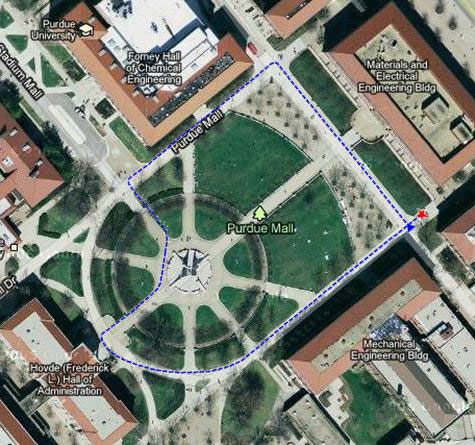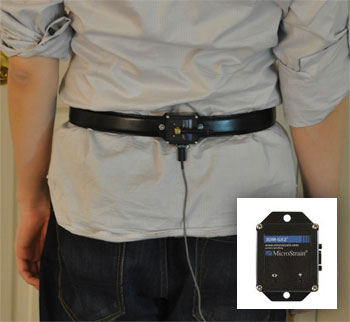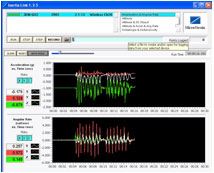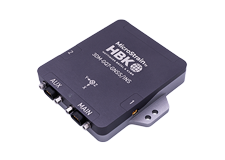Applications
Downloads
Tags
Parameters
Related Products
- By
- Posted Wednesday, July 29, 2015 - 09:15
Cost effective inertial sensors demonstrate accurate dead-reckoning positioning in two and three dimensions for more precise and reliable personnel tracking.
 Personal navigation systems provide a valuable resource for individuals maneuvering in complex environments. Yet, commercial solutions continue to remain limited to outdoor settings. System reliance on external referencing sources, such as GPS, prevents operators from realizing comprehensive positioning capabilities. The development of an affordable, self-contained personal navigation system would provide users with access to continuous localization information regardless of local settings and structures. Research engineers at Purdue University used MicroStrain devices to implement a high accuracy, integrated inertial pedometer. The solution enabled precise indoor and outdoor navigation in a small, cost-effective platform.
Personal navigation systems provide a valuable resource for individuals maneuvering in complex environments. Yet, commercial solutions continue to remain limited to outdoor settings. System reliance on external referencing sources, such as GPS, prevents operators from realizing comprehensive positioning capabilities. The development of an affordable, self-contained personal navigation system would provide users with access to continuous localization information regardless of local settings and structures. Research engineers at Purdue University used MicroStrain devices to implement a high accuracy, integrated inertial pedometer. The solution enabled precise indoor and outdoor navigation in a small, cost-effective platform.
In principal, a personal navigation system would deliver localization data at any time, regardless of setting. However, the accuracy in pedestrian position estimation systems is limited if the global positioning system (GPS) signal is blocked or degraded. Self-contained technologies are available and include exotic systems such as fiber optic rings and ring laser gyros. The adoption of these technologies in both pedestrian navigation applications face ITAR and price restrictions. Tracking the position of dynamic individuals such as soldiers and firefighters demands the accuracy of exotic solutions while maintaining the price point of conventional systems.
 Temperature Compensated Orientation
Temperature Compensated Orientation
Recent advancements in micro-electromechanical systems (MEMS) help close the gap between system accuracy and solution price. MicroStrain’s 3DM-GX2 inertial sensor offered a low-cost, high-performance MEMS platform for Mechanical Engineers at Purdue to develop their virtual pedometer. The 3DM-GX2 supports a range of fully calibrated inertial output data quantities with a tri-axis accelerometer, gyro, and magnetometer. Additionally, computed orientation provides a precise rotation matrix to distinguish three-dimensional routes. All quantities on MicroStrain’s inertial device are fully temperature compensated and are mathematically aligned to an orthogonal coordinate system for enhanced, repeatable capability.
Assistant Professor of Mechanical Engineering, Kartik Ariyur, led the development project. Mr. Ariyur and his team instrumented the 3DM-GX2 device on the subject’s center of gravity, and from this location they were able to exploit pulses recorded by the tri-axial accelerometer during each step. (See Figure 2) Known biomechanical constraints, such as leg length, were used as inputs into the self-calibrated system. A corrected relationship between stride interval and stride length was developed and integrated for position estimating in long time walking and running tests.
High Accuracy Dead-Reckoning
Purdue demonstrated a sensor-based system that achieved accurate positioning in both two-dimensional and three-dimensional domains. In two dimension test settings, the positioning error experienced while using MicroStrain’s inertial sensor was less than 1% of the total distance traveled. In three-dimensional environments the maximum localization error was less than 5% of the total distance traveled.
Current Market Need
Advances in the accuracy and reliability of low-cost inertial navigation devices will help facilitate the deployment of personal systems in both military and commercial markets. Purdue’s work using MicroStrain inertial sensors can help provide markets with a more accessible solution. One market of particular interest involves supporting deployed  soldier with adequate navigation and localization tools for urban environments. Historically, the adoption of soldier navigations systems by the military has largely been limited by cost concerns. Effective systems can cost in excess of $100,000 per unit. MicroStrain’s sensors support effective navigation at a fraction of the cost.
soldier with adequate navigation and localization tools for urban environments. Historically, the adoption of soldier navigations systems by the military has largely been limited by cost concerns. Effective systems can cost in excess of $100,000 per unit. MicroStrain’s sensors support effective navigation at a fraction of the cost.
Estimated position is largely limited by the bias in the process of inertial measurement. At Purdue, researchers successfully demonstrated the ability to control the influence of inertial measurement bias through the use of advanced filters. The innovation of their work includes both the accuracy of their filter methodology, as well as the commercial implications of a competitively priced personnel tracking platform.
Acknowledgements
MicroStrain thanks Kartik Ariyur of Purdue University for sharing his application details and experience for this case study. This paper does not represent an endorsement of any particular product or application by Purdue University.










